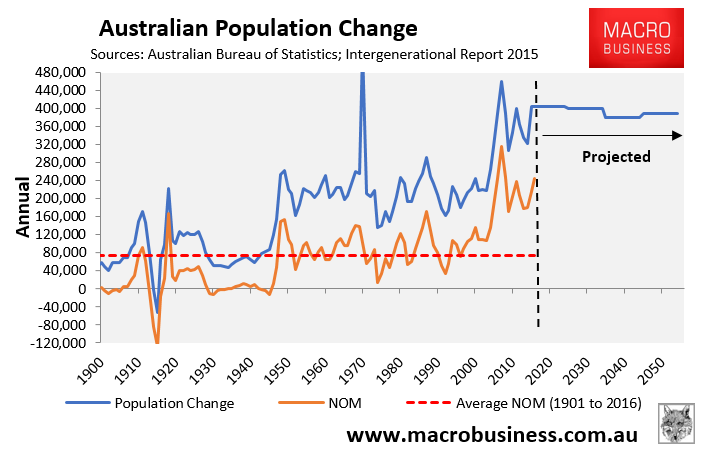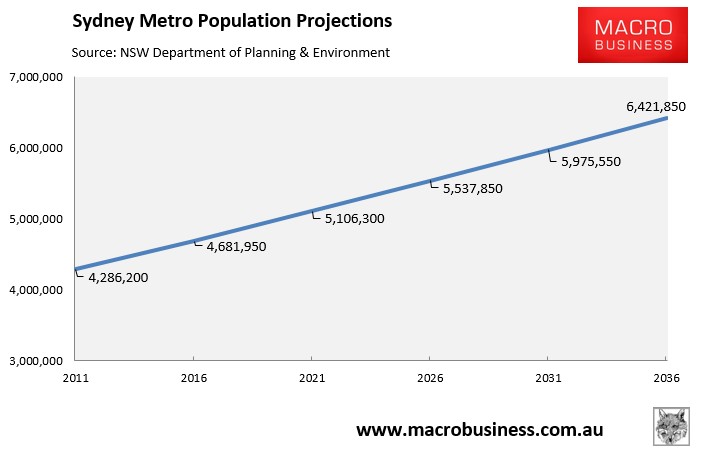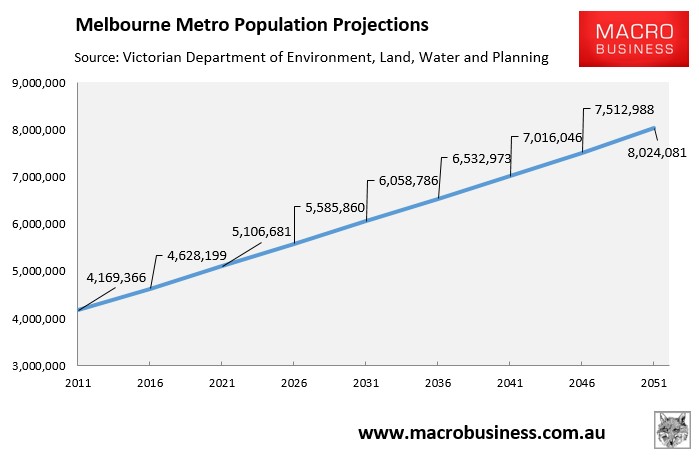Minister for Urban Infrastructure and Cities in the Turnbull Government, Paul Fletcher, has written a propaganda piece in The Australian hailing the Government’s “unprecedented” infrastructure spend:
The Turnbull government is investing in infrastructure at unprecedented levels — and we are well on track to meeting our commitment to invest $50 billion in transport infrastructure over the period from fiscal 2014 to fiscal 2020.
Commonwealth budget figures show an average infrastructure spend exceeding $8bn a year from fiscal 2014 to fiscal 2021. By contrast, over the six years of the Rudd-Gillard-Rudd government, average spending on infrastructure was just over $6bn a year.
The share of total public infrastructure spending coming from Canberra has risen markedly. In the Rudd-Gillard-Rudd years, 24 per cent of total public investment came from the commonwealth (with the balance coming from other levels of government.) Under the Coalition, that figure has risen to almost 30 per cent.
Australia’s level of transport infrastructure investment and maintenance spending was equal highest in the OECD, at 1.4 per cent of GDP, in 2014, the most recent year for which the OECD publishes this data.
Across the country there is plenty of evidence of this infrastructure spending hard at work…
Infrastructure projects of this scale bring jobs in large numbers. Construction of WestConnex in Sydney will generate 10,000 direct and indirect jobs; there are 1350 jobs on the M80 ring road upgrade in Melbourne.
The impact on the level of construction activity in the economy is showing up strongly…
So the message is clear — the Turnbull government’s high levels of infrastructure investment are driving economic activity and growth around the country.
The spending commitments are flowing through into very high levels of infrastructure construction activity — and in turn we are seeing a direct effect on jobs and economic growth…
According to the economics team at the Commonwealth Bank, the lift in public infrastructure spending in fiscal 2018 will directly add half a percentage point of GDP growth in fiscal 2018. Including the multiplier effect, it estimates the impact to be as high as 0.7 percentage points.
With real GDP growth projected at 2.75 per cent for fiscal 2018, this shows just how important the Turnbull government’s infrastructure spending is to our economy.
Upon reading this spin, I was immediately reminded of the masterful interview in 2015 by The Australia Institute’s chief economist, Richard Denniss, on Sydney’s 2UE Radio:
Australia is one of the fastest growing countries in the developed world and our infrastructure isn’t keeping up. It isn’t keeping up now and hasn’t kept up for the last 10 years, and it’s not budgeted to keep up in the next 10.”
“What politicians are doing is every year they announce record spending on this and a new that, but what they don’t point out is that on a per person basis, per person we are spending less on health, per person we’ve got less access to transport, per person the reason the queues in the hospital keeps getting longer is because we are not building hospitals as fast as we are growing our population. They all know it, they just don’t say it”.
“…what we have done for nearly 15 years now is we’ve significantly increased the rate of population growth and we are saying “we’ll build rail in the future… we’ll build the hospitals in the future”. Yes, there’s no doubt that any minister can rattle a list of things they are planning to build. What they don’t say is that given that our population’s gonna grow by around 400,000 people this year, we are not building nearly enough hospitals and schools and roads to keep up with that. So, yes, there’s always a big pipeline, but what they are not telling you is that per person, the amount of infrastructure is declining. Per person, the amount of spending on health is declining”…
“If you want to double your population – and that’s our plan – we want to double our population – you have to at least double your infrastructure to maintain people’s standard of living… We’re talking schools, we’re talking hospitals, we’re talking trains, we’re talking roads, we’re talking police”…
“Population growth costs a lot… If you double the number of citizens then you double the number of teachers and double the number of nurses. It’s pretty simple math. But of course, you don’t have to double them if you gradually plan to lower the number of services. If you are happy for us to gradually lower the number of services in our health system, our aged system, if you are happy for congestion to gradually get worse, if you are happy for the amount of green space per person to decline, then you can do what we do. But the trick is at the moment is every budget – and all governments do this – every budget the minister says “I’m spending a record amount on health”. Well, of course you are, we’ve got a bigger population than we’ve ever had before. Every year has to be a record. But, their own data shows that on a per person basis, it’s just not keeping up”.
In September, Labor’s infrastructure spokesman, Anthony Albanese, also cited parliamentary library figures showing that infrastructure investment under the Coalition would decline from 0.4% as a share of GDP to 0.2% over the next 10 years:
“It will be cut in half”…
“That has a real impact on growth and on jobs.
“We are not talking here about projects like Cross River Rail, where they have cut out almost $1bn or Melbourne Metro, where they cut out $3bn, this is the government’s own figures, what they said they would do, on top of the cuts that they have made to important projects, particularly to public transport projects”…
The Coalition, just like Labor and The Greens, is a rabid supporter of mass immigration and a ‘Big Australia’. And Treasurer Scott Morrison himself has acknowledged that immigrants tend to settle in inner city areas:
“When immigrants have come to major cities all around the world, they have tended to congregate around inner city areas. That has been one of the most established settlement practices for a millennia”.
Australia’s population is projected by the government to increase by some 400,000 people a year – effectively a new Canberra – for the next 40- years, meaning that Australia will need to build-out the equivalent of three new Sydney’s over that time period to keep the stock of infrastructure per capita constant:

Most of this growth is also projected to occur in our two major cities, which are projected to grow by 1,650 people per week (Sydney) and 1,850 people per week (Melbourne) for decades to come:


Blind Freddy – but clearly not the Turnbull Government – can see that residents in these cities are facing horrid ‘crush loading’ unless there is a massive and sustained boost to infrastructure investment.
Neither can the Turnbull Government credibly shift blame to the states. Because of the vertical fiscal imbalances embedded in Australia’s federal system, the Commonwealth collects 82% of total tax revenue versus the state’s and territories’ 15%, and local government’s 3%. This has left the states critically starved of funds to cope with the population influx hoisted upon them by the federal government, which controls immigration policy.
The choice is simple: if the Turnbull Government chooses to maintain a mass immigration policy, then it must fund the required infrastructure and services. But if it does not wish to provide such funding, then it must dramatically cut immigration.
Maintaining the status quo is a guaranteed recipe for destroying Australian living standards.

